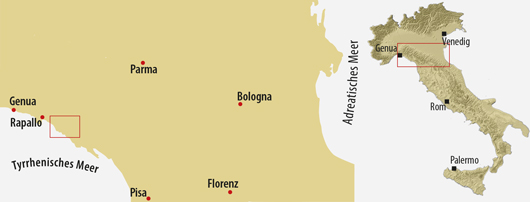|
Slate deposits of Liguria (Italy]
The slate of Liguria is being mined in numerous underground mines in the Northern Apennines. All active mines are located on the northern side of the Val Fontanabuona roughly between the villages of Gattorna in the Southwest and Lorsica in the Northeast.
The slates evolved during the mountain building during Tertiary and Quaternary time and the Northern Apennines are built up by several nappes and thrusts units. The slate of Liguria belongs to the "Monte Verzi Slates" of the Upper Cretaceous Val Lavagna Formation ("Formazione di Val Lavagna").
The slates belong to the Inernal Liguride units of the Ligurian nappe. Three distinct pre-Oligocen deformation phases can be distinguished which were slightly overprinted by Miocene events. The first deformation phase is characterised by strongly non-cylindrical isoclinal folds. The disjunctive cleavage plane is generally parallel to the bedding. The second deformation phase overprinted existing structures and is characterised by overturned and asymmetric folds. The folding was accompanied by the development of the second foliation and is continuously developed in the slates. Both deformations phases occurred during late Paleocene and middle Eocene. The last and only weak deformation phase is characterised by gently folds with subvertical axial planes and kink folds. The first two foliations were overprinted in the whole area and a third subvertical foliation evolved. This deformation is suppose to took place in the late Eocen.

Ligurian slate district in the Northern Apennines south of Rapallo.
The Monte Verzi slates ("Ardesie di Monte Verzi") are mainly present in the valley of Fontanabuona comprising marly shales, slates and partly more or less massive slates. The thickness of the slates of Monte Verzi on the northeastern side of the Val Lavagna ranges from 350 to 400 m.
The dark grey to black slates turn into an almost uniform yellow-white-greyish colour on the roofs and faÁades. The slate shows a good fissility and can be split into thin shingles of 5-6 mm in thickness. Thus the total thickness of the overlapping area of the shingles can be up to 5 cm.
Contrary to other slate districts is also the usage of slate as a dimension stone for different architectonical purposes. Noticeable are the historical portals with their sculptural work on the lintels and, less pronounced, on the embrasures.
Pictures
Move mouse over thumb to enlarge.
|

